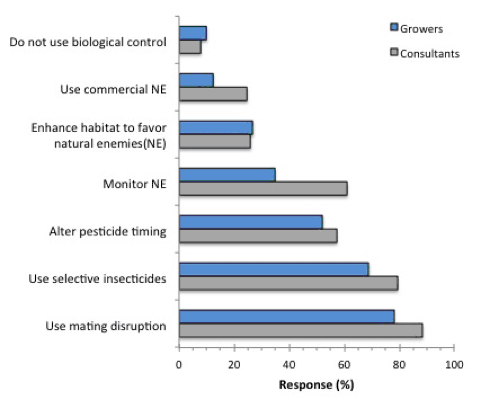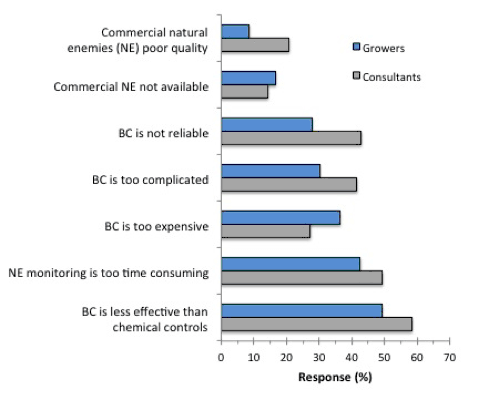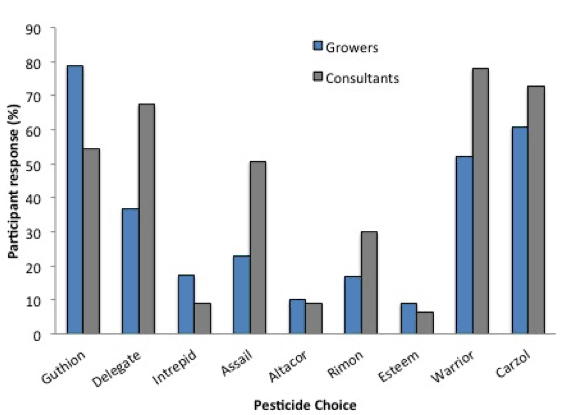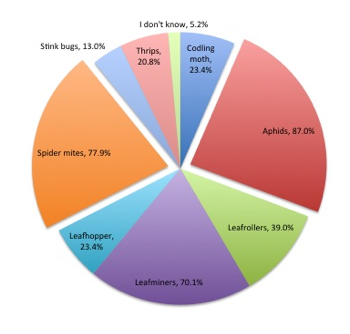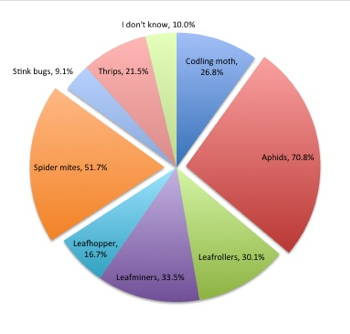Greater than 85% of the growers and consultants are residents of the state of Washington. Participants ranged in age from 20 to 80 with the highest number of respondents between the ages of 51 and 65 years old (40% of growers; 49% of consultants).
Both growers and consultants had a range of educational experiences, where greater than 60% of the growers had either a high school or 4-year college degree and approximately 60% of consultants had a 4-year college degree. The demographics (age, education etc.) of these growers and consultants did not influence their use or knowledge of biological control.


